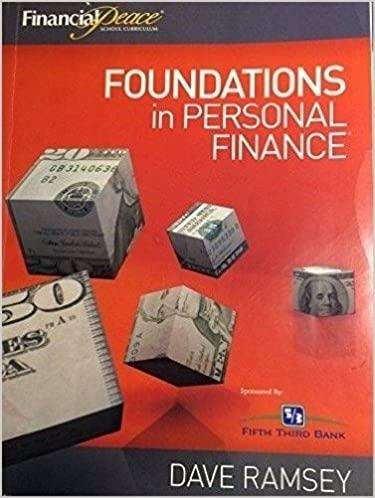Answered step by step
Verified Expert Solution
Question
1 Approved Answer
1 . Answer the following questions regarding financial forecasting: a . Which items comprise operating current assets? Why is it reasonable to assume that they
Answer the following questions regarding financial forecasting:
a Which items comprise operating current assets? Why is it reasonable to assume that they grow
proportionally to sales or COGS? Which ones are proportional to sales and which ones are
proportional to COGS? Explain
b What are some reasons that net PP&E might grow proportionally to sales, and what are some
reasons that it might not?
c What are spontaneous liabilities and why is it reasonable to assume they grow at proportion of
sales or COGS? What are spontaneous liabilities also known as in fact, we used this alternate
name in previous modules What are the most common examples of spontaneous liabilities?
Answer the following questions regarding financial forecasting:
a How are operating items projected on financial statements?
b How are preliminary levels of debt, preferred stock, common stock, and dividends projected?
c Suppose COGS is currently of sales and over the next year sales growth by and growth
COGS is Do you predict the COGS as a percent of sales will increase, increase, or remain the
same over the next year? Explain and verify your intuition by calculating the COGS be as a percent
of sales at yearend?
d What is the financing surplus or deficit in general? How is it calculated?
Define the following terms related to financial forecasting?
a Operating plan; financing plan
b Spontaneous liabilities; profit margin; payout ratio
c Additional funds needed AFN; capital intensity ratio; selfsupporting growth rate
d Forecasted financial statement approach using percentage of sales
e Excess capacity; lumpy assets; economies of scale
f Full capacity sales; target fixed assets to sales ratio; required level of fixed assets
The following questions relate to the process of financial forecasting
a Generally the maximum time horizon over which we forecast pro forma statements is till one year
after a firm matures. What are the characteristics of a firm when it matures?
b Discuss a firms operating plan and financing plan as it relates to financial forecasting.
c Describe the process through at least passes through which you can forecast next years
statements? Why are multiple passes needed? In which passes is the information in operating plan
and financing plan incorporated?
Answer the following questions related to AFN.
a The following equation is sometimes used to forecast funding requirements:
AFNASSLSS MS POR
What key assumption do we make when using this equation? Under what conditions might this
assumption not hold true? What would be the more general formula for AFN?
b Name five key factors that affect a firms external financing requirements. Explain how each one
affects the requirements?
c What is meant by the term selfsupporting growth rate How is this rate related to the AFN
equation, and show how this equation be used to calculate the selfsupporting growth rate?
d Suppose a firm makes the following policy changes listed. If a change means that external,
nonspontaneous financial requirements AFN will increase, indicate this by a ; indicate a
decrease by a ; and indicate no effect or an indeterminate effect by a and explain your
reasoning. Think in terms of the immediate effect on funds requirements.
i The dividend payout ratio is increased.
ii The firm decides to pay all suppliers on delivery rather than after a day delay in order to
take advantage of discounts for rapid payment.
iii The firm begins to offer credit to its customers, whereas previously all sales had been on a
cash basis.
iv The firms profit margin is eroded by increased competition, although sales hold steady.
v The firm sells its manufacturing plants for cash to a contractor and simultaneously signs an
outsourcing contract to purchase from that contractor goods that the firm formerly produced.
vi The firm negotiates a new contract with its union that lowers its labor costs without affecting its
output.
Answer the following three questions:
a Suppose the CFO does not want to raise external capital debt or equity under any circumstance
including when the firm has great investment opportunities but needs external capital to fund them
all What are the firms options? How much can the firm grow Selfsupporting growth rate if no
capital is raised AFN must equal
b Is it possible that after the first pass Total Assets Total Liabilities Total Equity? If so under what
situation? What do you do in this situation?
c Is it possible for an increase in sales to be accompanied by no increase in fixed assets? If so under
what condition can this occur? Can this be sustained in the longrun?
d How would economies of scale and lumpy assets affect financial forecasting?
These are practice problems. If you can work them out step by step and give a detailed explanation that would be helpful
Step by Step Solution
There are 3 Steps involved in it
Step: 1

Get Instant Access to Expert-Tailored Solutions
See step-by-step solutions with expert insights and AI powered tools for academic success
Step: 2

Step: 3

Ace Your Homework with AI
Get the answers you need in no time with our AI-driven, step-by-step assistance
Get Started


